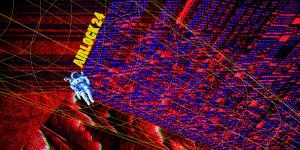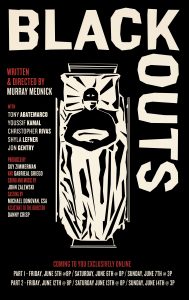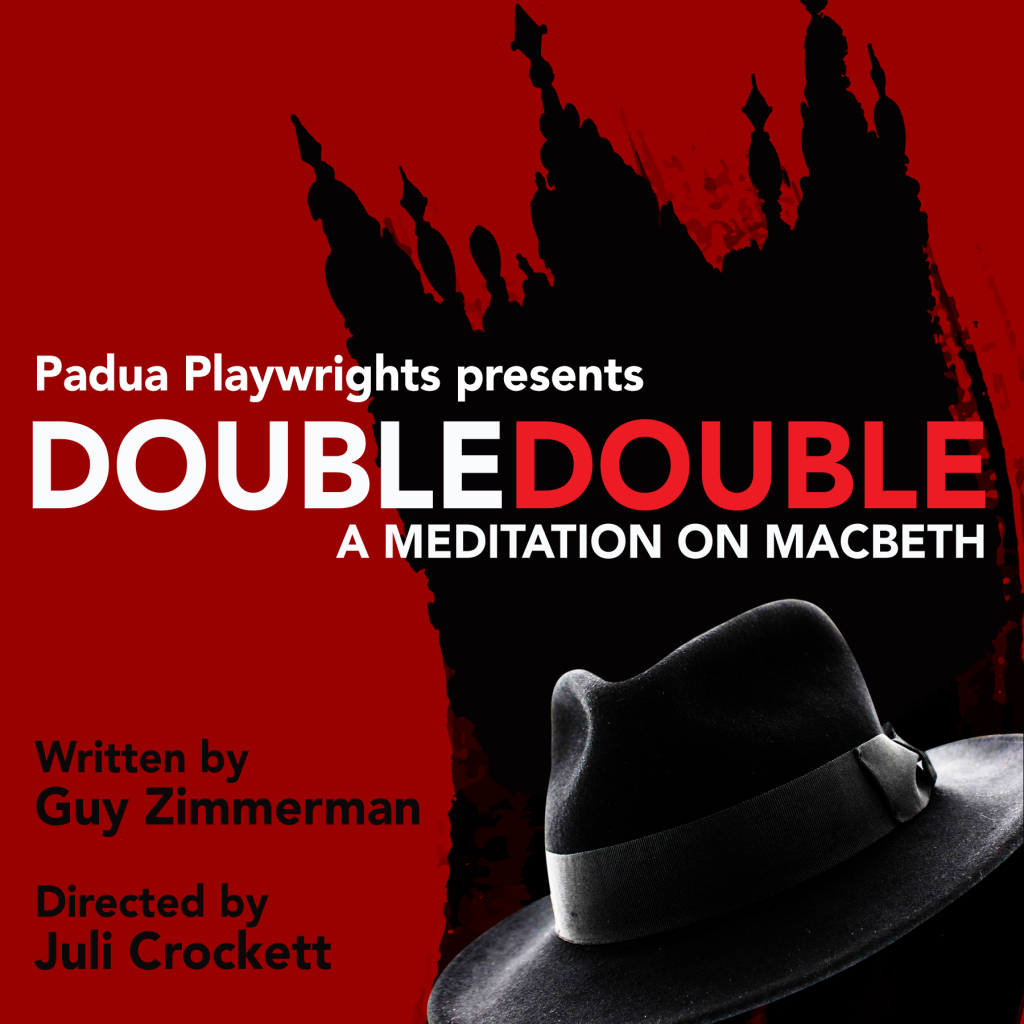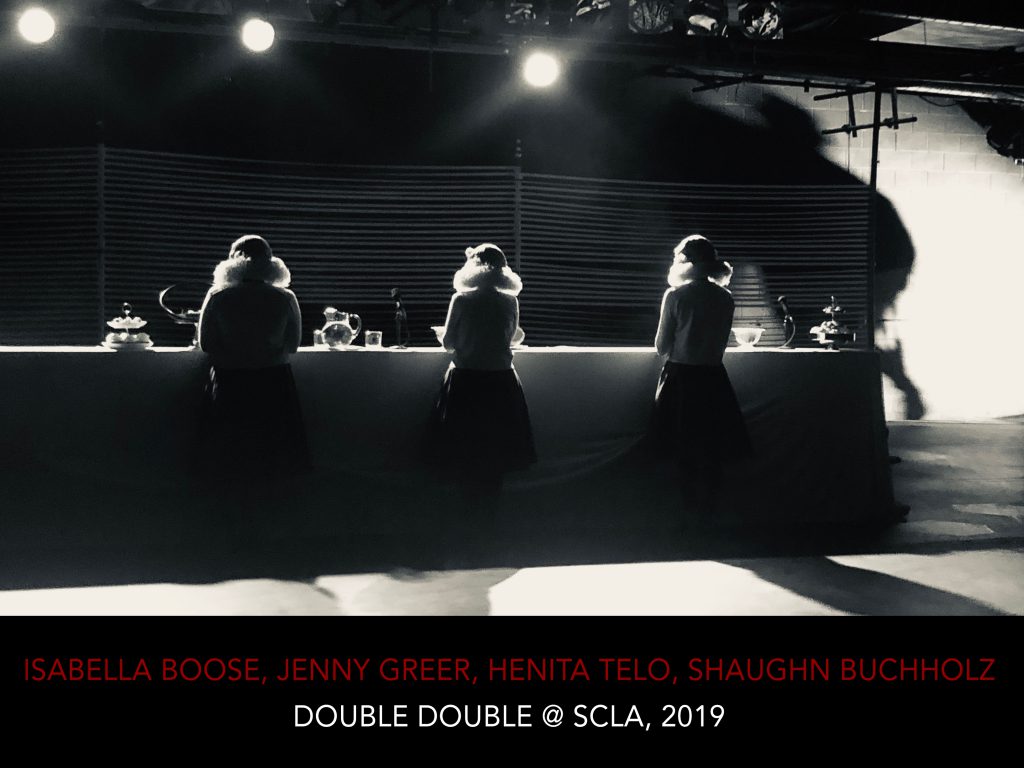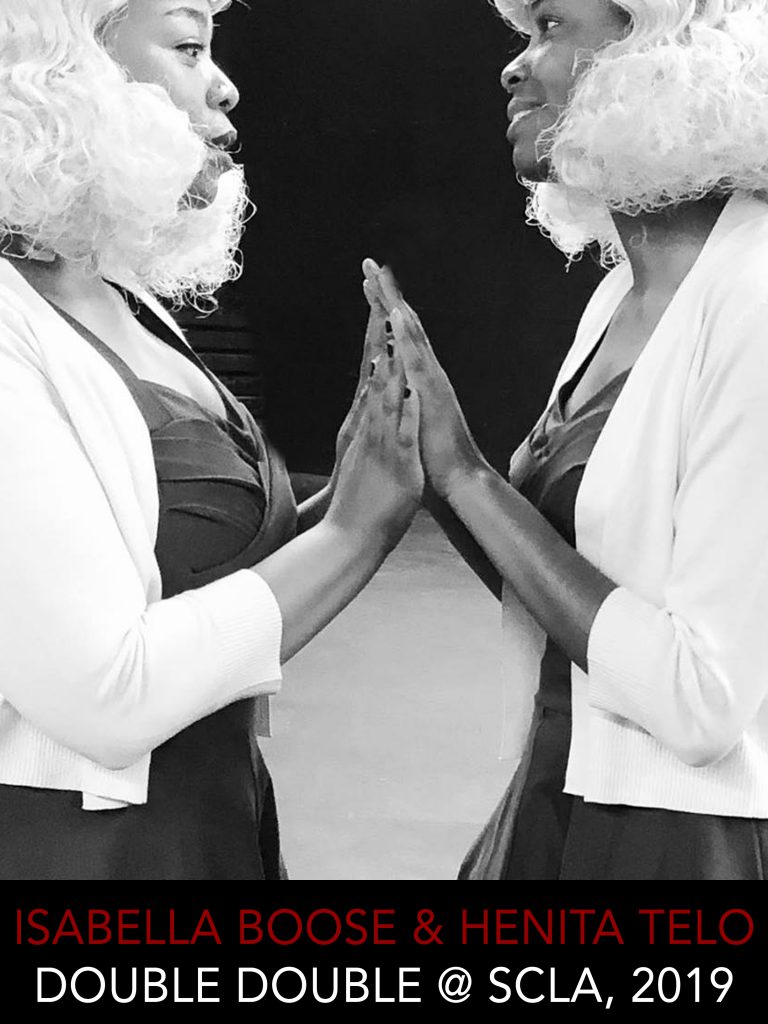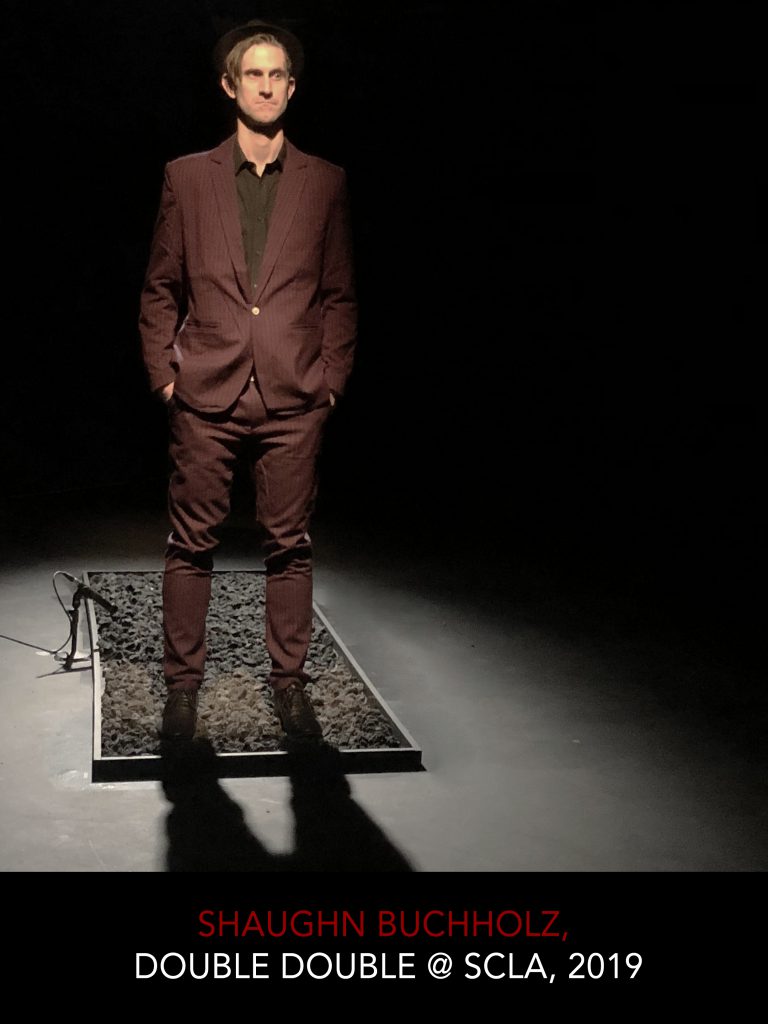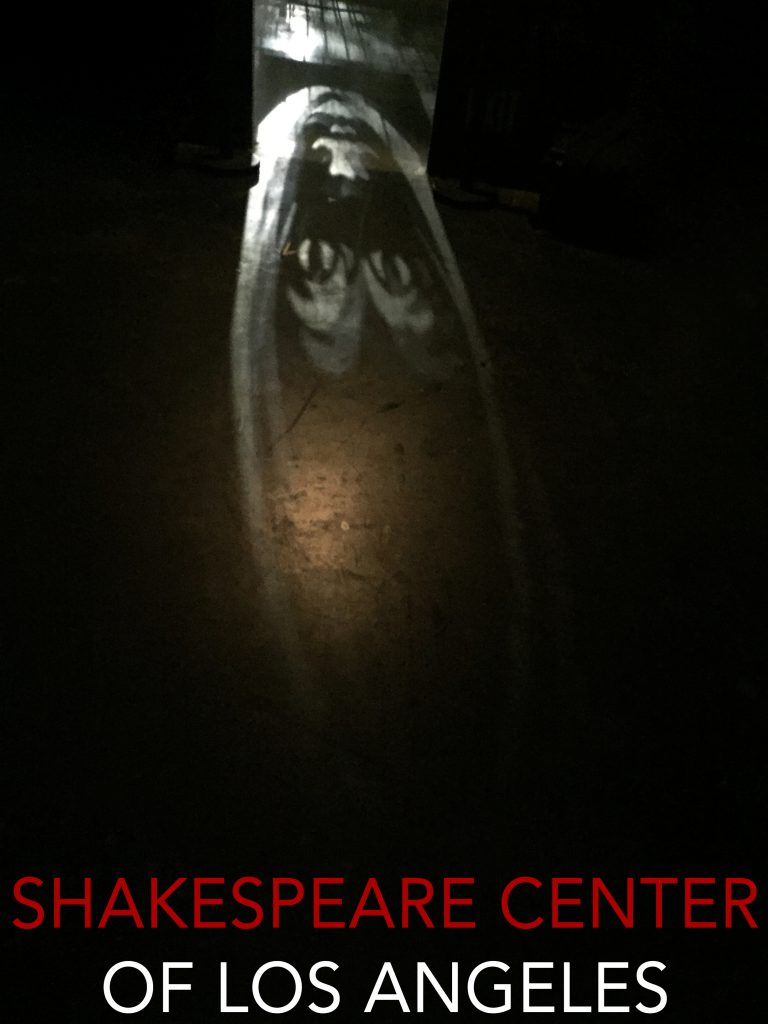Artist-run organizations are exceedingly rare. When they do arise, they often quickly self-combust out of some deadly combina- tion of fractiousness, funding problems, or some other mortal wound linked to the excessive quality of the artistic personality. For an artist-run organization rife with all of these maladies to last a full eighteen years is akin to a unicorn surviving hoof-and-mouth disease. In some ways the longevity of the Padua Hills Playwrights Workshop/ Festival (1978–1995) testifies to the obdurate tenacity and resource- fulness of its artistic director, Murray Mednick, who came West to Los Angeles in the mid-1970s and brought a piece of Off-Off- Broadway with him. For the next eighteen years the adventurous, anarchic aesthetic of Off-Off thrived at the festival, where it contin- ued to evolve, eventually becoming something different.
To call the nomadic and highly adaptive community of practice of Padua alternative is too weak. Fugitive also feels wrong, indelibly linked as it has become to the experience of Black Americans. Artistic banditry has something right about it—a term applied to the precursors to organized class struggle and resistance, social bandits such as Pancho Villa or Ned Kelly. An aesthetic community like Padua, producing transformative work outside the system of capital production, to me smacks most of the outlaw. Playwrights working outside the law, in the hills, where live wild creatures large and small. It’s where Dionysus takes possession of us too, in the hills. Yes, each summer, for eighteen years, the artistic renegades of Padua convened somewhere in the L.A. basin to perform new plays in site-specific venues on the campus of some university, college, or cultural institu- tion. Maintaining a high level of literary and performative quality over its two-decade lifespan, the festival outfitted three generations of young American playwrights in the fine art of causing trouble onstage.
There are caveats to this basic story. In terms of the Off-Off- Broadway movement, for example, Murray was always strongly linked to Theatre Genesis and its literary and poetic sensibility, rather than to the other important venues, Café Cino, Judson’s Church, and La MaMa. However, the two other Off-Off playwrights associated with the festival—Sam Shepard and María Irene Fornés— also worked in those venues. It’s important also to note what drove this group of artists west at the end of the 1960s: namely, the extended fiscal crisis in Mayor John Lindsay’s New York City. This crisis led to drastic cuts in the kind of arts funding that had sustained Off-Off-Broadway, and to the rising rents and gentrification that ended the period of artistic ferment. The result was that the mid- 1970s saw a diaspora of artists, especially from the bohemian sectors of lower Manhattan. For theatre artists, Los Angeles presented itself as a surprisingly hospitable alternative. Low rents in various pockets of the vast suburban sprawl, the world’s largest population of gifted and underemployed actors, lax Actor’s Equity union rules that allowed for inexpensive cooperative production—the region’s advantages compensated for the absence of any real theatre audience, at least when it came to the workshop approach characterizing Off-Off-Broadway experimentalism. And for those interested in site-specific production, as these New York exiles certainly were, the mild, arid climate opened the way to the kind of explorations that were appealing for artistic reasons as well.
I didn’t encounter Padua directly until the 1994 festival at Woodbury University in Burbank, but I had already been working closely with John Steppling for some time. Along with Wesley Walker and Sharon Yablon, I had been a member of Circus Minimus, the company John ran with Cinda Jackson and Mick Collins, producing a series of experimental shows at the Lost Studio on La Brea in Los Angeles. John introduced me to Murray after an evening that included a play of mine called Head Trader, and I recall being immensely pleased when Murray tapped a finger on my forehead and in his wise-guy Brooklyn accent said, “Interesting sensibility.” The ’94 festival was a strong one, with excellent work from the main- stays—O’Keefe, Steppling, Fornés, and Mednick himself. I was assigned to assist Neena Beber in the direction of her fine piece Failure to Thrive, and the remainder of the plays that year had impressive qualities also. I took part in the workshops and read new material in the scorching Saturday sessions. The next year, Murray asked me to direct his play Freeze at the final festival, held at USC. The theatre department there was quite supportive, but as hulking football players tromped through our sets and audiences dwindled after our smog-choked opening weekend, it was impossible to ignore the sense that the time had passed the festival by.
For the next five years, I continued to write, direct, and produce new work in the city, first with Steppling and then with a company of other Padua alumni called Oxblood. Among six other new plays, we mounted a play by Murray called Tirade for Three, the first of the Gary Plays, staring John Diehl, Shannon Holt, and Hank Bunker. Murray was pleased, I believe, by my direction of that piece. When a private source of funding for a new production company arrived in 2000, he asked me to run it. We called this new company Padua Productions. Everyone knew it was a very different beast than the Padua Hills Playwrights Festival/Workshop, but there was also considerable aesthetic continuity. Without the endlessly fascinating site-specific component, we focused on bringing a level of production quality to productions of new work. We had a good deal of success mounting new plays by Murray, O’Keefe, Steppling, and a number of younger Padua-influenced writers. We moved several productions to New York and other cities, produced a number of film adaptations, and also published ten volumes of plays, distributed nationally by TCG, this book included.
Encountering the festival for the first time, my experience was like that of others included in this volume. In the early 1990s, Padua was still a magnet for countercultural defiance that had by that time become hard to find. Murray himself was still very much at the center of things, sitting quietly as the chaos eddied and swirled around him. Irene’s remarkable workshops loomed large for many students, as did the very different workshops of Steppling, O’Keefe, and the other playwright-teachers. You had the sense that this outlaw event was not something that should be happening. You felt, in fact, that it should never have been possible to begin with. Someone in the cultural apparatus had screwed up, and soon they’d realize it and take steps to shut Padua down. There was also still a palpable sense of salience within the larger currents of American culture. Important actors like Ed Harris and Tim Robbins had recently served on the board. Murray had recently taken his Coyote Cycle on tour in Europe. Irene Fornés had been broadly embraced within U.S. literary circles at the national level. Shepard, a participant in the first festivals and a crucial colleague to these artists, was completing his ascent into the canon of Pulitzer Prize–winning playwrights alongside a similar ascent into Hollywood celebrity. Steppling was getting produced at the Mark Taper Forum and at the Humana Festival and had written the screenplay of a major film release (52 Pick-Up). O’Keefe, finally, had recently been produced at New York’s Public Theater, complet- ing a national tour. A renegade institution that should not exist, a bandit collective of colorful characters practicing their demanding art form free from commercial considerations or institutional obstacles, Padua was an unlikely hybrid, anomalous in the cultural landscape.
Organic and serendipitous in this way, and with a renegade’s suspicion of hierarchy and regulation, Padua presents formidable challenges to the orderly, synthesizing eye of the cultural historian.
The essays in this collection are appropriately wary of reductive pronouncements about the festival and what its aims were in some general, overarching way. It was about making theatre, off the grid, with the playwright at the center of the process, working directly with actors to forge an unmediated connection with audiences. These essays alternate between formal perspectives on Padua’s aesthetics and recollections that convey what it was like to live and work there. In one way or another, each of the artists contributing to this volume conveys the unprocessed energy of this recurrent artistic feast, with a sense of wonder and appreciation—along with, in a few cases, wounds that are still fresh. Without a lot of theoretical armor, the renegade spirit of the festival blows through these pages like a Santa Ana wind. Still, some context will be helpful.
2. The Thermocline of the 1970s
Launching their creative careers at the beginning of the 1960s—an era defined by revolutionary engagement and idealism— Mednick and Fornés began working in L.A. a decade later. By the mid-1970s, the cultural mood within the counterculture had begun to shift toward the defiant aggressiveness and nihilistic tribalism of punk. During this same time, radical and progressive discourse—in- creasingly disillusioned with the totalitarian aspects of state social- ism—had begun to abandon utopian grandiosity in favor of the do-it-yourself (DIY) aspect of the punk aesthetic. As mentioned above, the Off-Off Broadway theatre artists—Mednick and Fornés, Bob Glaudini, Lee Kissman, O-Lan Jones, Kathleen Cramer, and many others—who migrated from the Lower East Side of Manhattan to Los Angeles in the mid-seventies found in Southern California the means to continue their creative evolution, working with the materials at hand. In Los Angeles, playwright-directors John Steppling, Marlane Meyer, and Kelly Stuart emblematized the next generation of risk-taking theatre artists, indicating how this renegade aesthetic would adapt in its new SoCal setting. A kind of noir minimalism arose in many of these works, combined with the exuberant experimentalism of the East Coast avant garde. The raucous San Francisco playwright John O’Keefe, a major participant at the festival, complicates this account in intriguing ways. Trained initially as a choral singer, and applying always a poet’s attention to precise language, O’Keefe trained for years in the Grotowski laboratory approach to performance. From the Bay Area, O’Keefe brought some of that rigor and energy to the Padua mix, along with the artists Leon Martell and Beth Ruscio.
Commingling promiscuously on the outskirts of L.A., these writers and their work need first to be considered within the broader cultural context of the city’s arts scene in the 1980s. In L.A., the Reagan years were also the heyday of the Beyond Baroque Literary Arts Center in Venice. Beyond Baroque was an underground arts collective that published small print runs, sponsored readings workshops, and supported transgressive new voices. Novelist Benjamin Weissman took over the institution from Dennis Cooper in 1983, when Cooper moved his seminal journal Little Caesar to New York City to establish a place on the national stage. Featuring also Amy Gerstler and the visual artist Mike Kelley, the “no wave” movement that Beyond Baroque embodied was so anti-establishment that it didn’t even want to register as a movement. Like the Padua playwrights, its artists were wary of the entrapments of ideology and the threat of commodification. The arrival of a deconstructive, punk edge in L.A. theatre in the 1980s was part of this larger cultural arc.
Much has been written and said about Padua over the years, but what becomes clearer with the passage of time lies in the domain in which artistic expression intersects with political economy. It is important to connect the festival’s cultural moment to, for example, the growing ideological assault during the 1980s of the free-market boondoggle ideology known as “neoliberal” capitalism. This long assault began in the 1970s and then entered its metastatic, species- ending phase under Ronald Reagan. We must remember that Los Angeles is the city where the communitarian spirit of Franklin D. Roosevelt’s New Deal came to die. The Watts riots (1965), the Tate and LaBianca murders (1969), Bobby Kennedy breathing his last on the floor of the Ambassador Hotel (1968)—these are the emblems of a darkening of the future.
If the extended artistic revolt that was the Padua Festival had become, by the mid-1990s, adjacent to the main course of progressive activism and politics, what about today, as we enter the third decade of the twenty-first century? We look back now over the wreckage of five decades of the ferocious class warfare mentioned above. Marked by financial parasitism, lurid performative patriotism dressed up with mass hypnotic spectacle, and a globalized monopolistic economy, neoliberalism exploited social divisions, simmering anti-Black racism, and cultural grievances large and small to reinstate the conditions of the Gilded Age that had closed the nineteenth century. One way to understand Padua is as a community of artists who felt what was happening. Plays like Fornes’s Mud, O’Keefe’s Don’t Call Me Anything But Mother, Steppling’s Neck, Mednick’s Shatter ’N’ Wade, not to mention Mednick’s entire Coyote Cycle, all of which premiered at the festival, speak to what was really going on in 1980s America and what was to come. Through depictions of poverty and predation—if only in the deep background of their plays—the Padua playwrights were depicting and protesting aspects of this dark transition.
To put this another way, the Padua writers were not safe, middle-class playwrights adopting an accommodationist stance with respect to U.S. cultural norms or their institutional guardians. As a queer woman and a first-generation immigrant from Cuba, Fornés was the definition of a cultural rebel, pioneering in her work a powerfully authentic voice for LGBTQ and Latinx communities without surrendering an iota of her differential authenticity. The other three leading voices of the festival—Mednick, Steppling, and O’Keefe—all had personal demons. Their plays were lit up with the raw, electric energies of childhood trauma, abuse, addiction, and poverty, American style. All four of these playwrights aspired to artistic perfection for the same reason: to assert their innate dignity in a world that refused them entry and affirmation. This entry wasn’t, finally, denied to them because of race or gender—it was more singular still than that. These artists were rebels and outcasts within their gender and race categories—and as a result, their argument was with normativity per se.
If the Padua playwrights aimed to stir up trouble, they were astute enough to recognize that doing so effectively requires formal experimentation—“making it new,” in other words. Through anger and raucous humor, their punk-like aesthetic pushed back against the symbolic systems, such as language and money, that underlie the ongoing fuckery. The safety pin of the punk icon Sid Vicious is emblematic in this regard, its infantile diaper imagery pointing back toward the prelinguistic site of origin. The safety pin also emblematizes the act of repurposing—a tool for temporarily binding fabric transformed into an article of adornment. In this DIY aesthet- ic, repurposing becomes an act of political defiance and a liberating statement—an explicit repudiation of Margaret Thatcher’s “there is no alternative” brand of free-market authoritarianism. The site-spe- cific imperative of the Padua Festival—plays staged in the loading docks and around the open fields of cultural institutions—spatialized this defiant commitment to new and scandalous uses of the overly familiar. Each year’s festival seeded the quotidian landscape of Los Angeles and its outskirts with radical surprise. And, as explored below, the angry negations of this punk-adjacent aesthetic also resonate strongly with the “poetics of failure” pioneered by Samuel Beckett.
As the 1990s progressed, this sense of being out of sync with the prevailing currents of cultural politics became more marked. U.S. culture at that time was beginning to grapple with deeper sources of division. The L.A. riots and Rodney King had been bellwether events. The conservative enemies of the counterculture had long ago found powerful cultural levers in anti-Black racism, anti-feminism, hetero- normativity, and other exclusionary tropes. To regain traction against the constant dog-whistling of the right wing, progressive politics was shifting from issues of redistribution to issues of repre- sentation—from the effort to revise the foundations of power to the equity with which it is apportioned. In the 1990s, it became clear that the interesting trouble to be made by artists had to do with demanding more than lip service when it came to racial and gender equity. Predominantly male and white, the Padua playwrights were not, it might seem, well suited to this task. And yet today, as we enter an era in which the old settler-colonial hierarchy of America’s white patriarchy begins to give way to a truly differential plurality, the more fundamental issues of political economy within capitalism begin to come back into view.
Operating below the surface of many Padua plays, alongside the influence of the mad Gallic poet-saint Antonin Artaud and the great Polish director Jerzy Grotowski, we can find an intriguing commitment specifically to Samuel Beckett’s plays. Murray cites the Irish playwright as a crucial influence. Irene Fornés put down her paintbrush and began writing plays immediately after seeing Roger Blin’s production of Beckett’s Waiting for Godot. This was the same text that inspired Sam Shepard to write his first play (Mildew) in high school, and Endgame was on Shepard’s bedside table when he died. Steppling too credits Beckett as his most important forebear, stating astutely in a 1990s interview that “Beckett is more political than Brecht.” Indeed, the entire Padua experiment—the eighteen summers during which eight playwrights and a company of fearless actors, designers, and playwrighting students gathered somewhere in the hot and dusty outskirts of Los Angeles to create new theatre outside—can be viewed at least in part as a long exploration of how relevant Beckett’s neotragic mode of theatre-making is to life in late-phase capitalism. Framed by disastrous landscapes of one kind or another, Beckett’s characters look out with great compassion, as do the work of the Padua neotragedians, at the true tragedy unfold- ing in the world of the audience. Of the leading figures at Padua, John O’Keefe is conspicuous for drawing his inspiration from other sources. (There may be irony at work in O’Keefe, but it is not Beckettian irony.) And yet, what was unusual and distinctive about Padua was, arguably, the presence of Beckett’s sensibility among so many of its dominant voices.
Beckett is supposed to have been a cerebral and largely apolitical artist—a poster child, one might say, for thorny obscurity. As it turns out, though, embodiment is central to his theatre work, and to its huge impact on the course of postwar theatre across the board. Describing the shift in his work during the Nazi occupation, Beckett used a specific word for the exhaustion of the conceptual mind: “Molloy and what followed,” he said, “became possible the day I became aware of my bêtise.” Bêtise is a term for foolishness derived from bête, meaning beast or animal. This moment is crucial to an understanding of the Padua Workshops as well as the festival. The way forward for the working playwright is always out of the mind and down into the animal body. The body, of course, does not know itself as an identity but rather as pure differential inputs where sensation, emotion, idea, and belief are all rooted. Sending the cognitive, writing mind down again and again into the rich strata of present experience is the key to all the many writing exercises deployed to great effect by the different Padua teachers, and most especially those of Irene Fornés. How do you construct a theatre piece to focus attention on this animal domain of knowing? Through a present awareness rooted in the senses: bêtise, in other words.
This embodied quality is also what makes Beckett a political writer—not, certainly, in the content of his plays, but in their form. Like the Greek tragedians looking ahead to the rise of the classical empires in Macedonia and Rome, and like Shakespeare writing at the threshold of modernity, Beckett composed his plays after emerging from several years hiding from the Nazis in the French countryside and wondering what would now arise out of the rubble. His deeply ironic approach to playwriting outfits the tragic sensibility anew and sends it out into the world again to do the work it has always done: warning us about the men of power and wealth and the price we pay for their intoxicated hubris. I’ve written elsewhere about the sequence one can trace between the Hamm and Clov relationship in Endgame down through Max and Lenny in Pinter’s Homecoming, to Alf Garnett and his much-berated stepson in the East End sitcom Till Death Us Do Part to our friend from Queens, Archie Bunker, and his Meathead son-in-law, and from there, of course, to Homer Simpson and all the other armchair misanthropes whose ridicule in mass media gave voice to a dethroning of the great white patriarchy around the globe.
No doubt sharper minds will inform me why this is wrong, but a fairly clear and simple way to distinguish tragic drama from melo- drama is that tragedy puts pressure on commonsense ideas of identity. Deeply addicted to exactly those kinds of commonsense notions regarding not only identity, but just about everything, the United States is, for tragic drama, hostile terrain. Simplistic ideas regarding identity are the foundation of the American creed of individualism that is implicated, it can be argued, in the full range of species-extinction threats we currently face. Until recently, it might have seemed preposterous to analogize the work Beckett created in the shadow of the Nazi occupation of France to the work the Padua writers created in the shadow of Reagan. But the overt fascism that came into view with the Trump administration—an extreme expres- sion of what began with Reagan—brings the connection closer to home.
It would be impossible, certainly, to overstate the impact of Fornés’s embodied, immersive, deeply Beckettian approach to theatrical composition on the current shape of American theatre.
From Tony Kushner to Caridad Svich, Migdalia Cruz, and Paula Vogel, scores of important playwrights at the heart of contemporary American theatre speak to the crucial importance of Fornés’s shaping influence. Padua, of course, was just one teaching venue among many for Irene, and must be considered alongside INTAR in New York and a host of other workshop venues she appeared at for several decades. Murray and Steppling’s influence as teachers take this mindful approach to writing from the body into kindred terrain. O’Keefe, it might be said, derived a similar assault on the confines of conceptual thought from the tradition of the wildly influential Polish director Grotowski. In O’Keefe’s work sudden left turns, without setup or “motivation,” speak to a similar immersion in the limitless capacities of the open moment.
This is not to claim theatregoers encountered in the plays at Padua much overt political activism. Rather the conformism and binarism of the increasingly financialized modes of thought trans- forming everything in the 1980s—thinking of life as a debt schedule moving inexorably along a linear timeline, for example—were undermined in these site-specific, avant-garde plays. Artworks are singularities, inherently destabilizing to all existing hierarchies of value, as well as all reified identities, no matter how they are mar- keted. There was also always at Padua the anarchy of our inherent playfulness, of erotic expressivity—pure difference—the realm of Dionysus, the deity who is always Other. Viewed in this way, what must be explained is not Padua’s ephemerality as a presence on the American cultural scene, but rather its remarkable resilience as the country shifted radically to the right.
3. Elemental Voices
This book is for younger playwrights who feel that one way or another, they simply don’t quite fit into the prevailing values of the U.S. arts community. Today, over forty years after the first Padua Festival, the hard-edged, uncompromising approach to the creation of the new calls out to new generations of theatre artists looking to walk the artist’s path in the hostile cultural wasteland of our new Gilded Age. By today’s standard, the festival verged on the politically incorrect, with lots of white male ego on display. But if Padua seemed in some ways like a boys’ club, it also featured some very strong female voices, including Marlane Meyer, Susan Mosakowski, Julie Hébert, Kelly Stuart, Susan Champagne, Cheryl Slean, and many others. These women were strong feminists, well aware of the masculinist, patriarchal aspect of the festival and the male posturing that often characterized interactions there. What drew them to the festival lay elsewhere—in Murray’s respect for artistic quality wherever it manifested, and in the company of fierce female actors— O-Lan Jones, Tina Preston, Patricia Mattick, Shawna Casey, Beth Ruscio, Pamela Gordon, Molly Cleator, and so many others—who were ready to roll their eyes at whatever nonsense the men were dishing out and get on with the work at hand.
But engaging with Padua’s legacy is valuable for the developing playwright for other reasons as well. We often today find ourselves embracing a rubric linked to identity when evaluating a play, a playwright, or a theatre community, and most often this is a reduc- tive process. Nuance and complexity get stripped away. Difference— that which is opposed always to identity—disappears from view. In the case of Padua, viewed as an anomalous assemblage running on the intensive differences between its component parts, this de-empha- sizing of difference is especially unfortunate. A fixation with identity has arguably diverted several generations of culture-makers from the harsh economic realities being enacted on all of us from above. As a result, the progressive agenda is now often hampered by the reality that the wealth has moved decisively into the top bracket, one that controls the mass media, making any restructuring difficult in the extreme.
“Community” is another buzzword artists typically become wary of. Whatever your background, you recognize in an unsenti- mental way that the term “community” often stands in for a set of normative rules designed to limit, capture, and contain the transfor- mative energies of art. It is a startling fact that the entire apparatus of official theatre, for example, is best understood as designed to prevent transformative work from reaching the public. As Steppling and I have explored in a number of contexts, a “placebo” function helps explain the embrace of work that has all the characteristics of art, minus its transformational impact. Once in a while, the stratum of resistance cracks open and something authentic is allowed to emerge—the plays of Irene Fornés, perhaps—but by and large the verdicts of officialdom regarding where the valuable work is being done wind up being utterly misguided. Ten or twenty years on, these verdicts fall by the wayside of cultural history, never to be considered again. It is the verdicts of young artists that wind up determining the course of cultural history—the work they engage and contend with in their own creative endeavors is what illuminates the map of value and the way forward. Try to convince a young saxophone player in the 1950s, for example, not to admire Charlie Parker because he was a drug addict. Or a young colorist in 1900 not to engage with Vincent van Gogh because he never sold a painting and his work had never been shown in an official gallery. Now, as ever, it is the choices young artists make as they continue to explore the form that will finally determine the course of cultural history. And as a young artist encountering Padua in the 1980s or 1990s, you knew in your bones that these were the writers you wanted to learn from.
That the Padua Festival lasted as long as it did cannot be explained without taking into account Murray Mednick’s stoical intransigence. Alliances among artists are almost always paranoid and unstable, and it may be that the better the artists, the more this is true. The third rail for any creative person is to become a producer of other artists’ work. Murray somehow managed for two decades to contain the tensions of his role running the festival while also pursuing his own striking artistic development. And when he eventu- ally stepped down, he then wrote another fifty or so remarkable plays. All of us owe him for so much.
Guy Zimmerman

